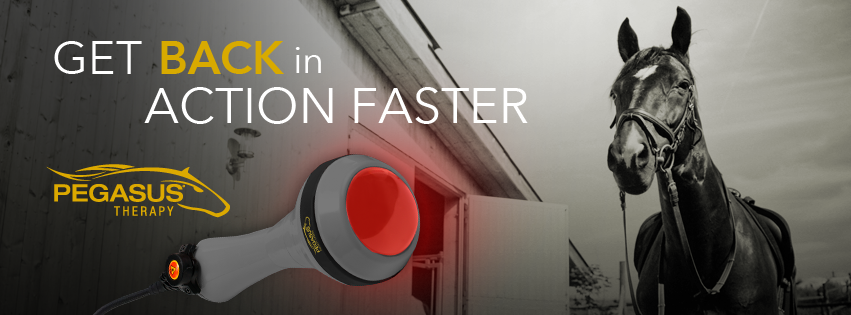Exactly How Laser Therapy in Equine Therapy Is Transforming Vet Look After Equines
Laser therapy has actually emerged as a transformative technique in equine vet care, offering a non-invasive solution that speeds up healing and enhances overall health and wellness. The transportability and adaptability of laser therapy tools even more highlight their growing necessity among veterinarians.
Understanding Laser Treatment

The modern technology behind laser therapy is based in the concept of photochemistry, where photons are absorbed by chromophores within cells, bring about boosted ATP manufacturing and inflection of responsive oxygen species (Equine Therapy). This, subsequently, promotes cellular proliferation, minimizes swelling, and speeds up healing. Vet practitioners use different kinds of lasers, including low-level lasers (LLLT) and high-power Class IV lasers, depending on the certain restorative purposes and the nature of the equine problem being treated
Various laser wavelengths and power settings are thoroughly selected to target different cells midsts and achieve desired professional outcomes. Safety protocols are critical, as incorrect usage can lead to thermal damages or suboptimal healing results. Therefore, a comprehensive understanding of laser therapy's devices and applications is vital for its efficient application in equine vet practice.
Benefits for Equine Health And Wellness
The myriad advantages of laser treatment for equine wellness include boosted healing, pain decrease, and boosted wheelchair. This sophisticated therapy method leverages details wavelengths of light to permeate tissues, promoting mobile feature and advertising quick tissue repair. The non-invasive nature of laser therapy ensures minimal tension and discomfort for the steed, assisting in a smoother recovery process.
Boosted healing is just one of the foremost advantages, as laser treatment accelerates cellular regrowth and collagen synthesis. This leads to much faster healing times from injuries and surgeries. Discomfort reduction is accomplished via the anti-inflammatory results of laser therapy, which reduces swelling and reduces the production of pain-inducing chemicals. As a result, equines experience significant relief from persistent and acute discomfort conditions.
By decreasing inflammation and discomfort, and boosting cells fixing, laser treatment aids in bring back joint feature and muscle versatility. Therefore, laser therapy stands as a transformative device in contemporary equine veterinary treatment.
Usual Problems Dealt With
Laser treatment has become a functional treatment alternative for a range of typical equine conditions. Among these, musculoskeletal injuries are particularly open to laser treatment. Equine Therapy. Soft tissue injuries, such as tendonitis and ligament pressures, gain from the anti-inflammatory and analgesic effects of laser treatments, which accelerate healing and decrease pain. Additionally, laser treatment is effective for problems like osteo arthritis, where it helps mitigate joint swelling and advertise cells repair.
Wound management is one more area where laser therapy has actually revealed considerable pledge. Persistent wounds or slow-healing abscess can be specifically challenging in equines, but laser treatment boosts mobile regrowth and improves blood flow, therefore speeding up the healing procedure. Laser treatments have actually been successfully employed in handling hoof problems such as laminitis and abscesses, alleviating discomfort and promoting quicker recuperation.

Technology Behind Laser Therapy
Past the myriad conditions treatable with laser treatment, the technology itself merits closer evaluation. At the heart of laser treatment is making use of certain wavelengths of light to penetrate cells and generate organic feedbacks. These wavelengths, typically ranging from 600 to 1000 nanometers, are uniquely absorbed by chromophores in the skin, muscle mass, and other tissues, initiating a waterfall of mobile events.
Laser devices used in veterinary medicine typically utilize low-level laser therapy (LLLT) or cold laser therapy. Unlike high-powered surgical lasers, these tools run at lower energy levels, maximizing therapeutic benefits while reducing thermal damage. The power from the laser light boosts adenosine triphosphate (ATP) manufacturing, boosts mobile metabolism, and increases tissue repair work procedures.

Success Stories and Study

Showcasing the concrete advantages of laser treatment, many success stories and situation research studies brighten its transformative effect on equine health and wellness. One such case involves a pureblooded racehorse suffering from persistent tendonitis. Conventional treatments generated very little enhancement, yet after integrating laser treatment right into the regimen, the equine exhibited substantial decreases in swelling and discomfort within weeks, inevitably returning to competitive auto racing.
One more compelling example includes a dressage horse detected with extreme pain in the back, limiting its performance. A veterinary group utilized low-level laser therapy (LLLT) to target the irritated areas, resulting in marked enhancement in versatility and a remarkable decline in discomfort. Over numerous sessions, the equine regained its peak kind, showcasing the efficacy of laser treatment in resolving bone and joint issues.
Additionally, a research carried out at a leading equine center examined 50 equines with various soft tissue injuries treated with laser treatment. The results stood out: 85% of the horses demonstrated sped up recovery times and enhanced mobility. These situations highlight the adaptability and effectiveness of laser treatment in equine medication, supplying a non-invasive, scientifically-backed strategy to enhancing recovery and efficiency in equines.
Conclusion
Laser therapy is transforming equine vet care by giving a non-invasive treatment that increases recovery, reduces swelling, and reduces check out here pain. With its efficiency in treating a variety of conditions, from musculoskeletal injuries to chronic ailments like osteo arthritis, this innovation considerably improves equine health and wellness and movement. The mobility and versatility of laser treatment further emphasize its transformative influence on veterinary methods, strengthening its role as a necessary tool in modern-day equine health care.